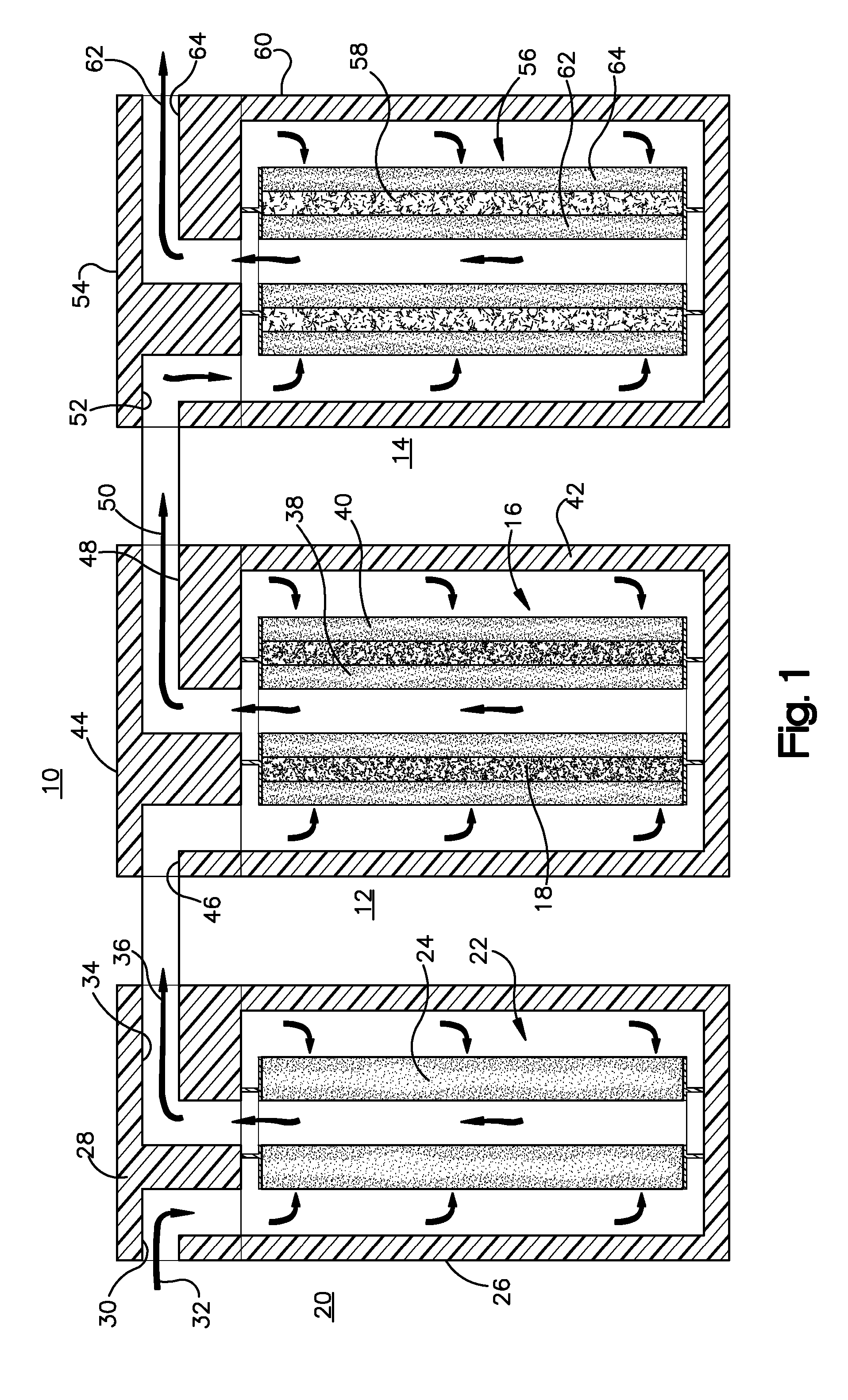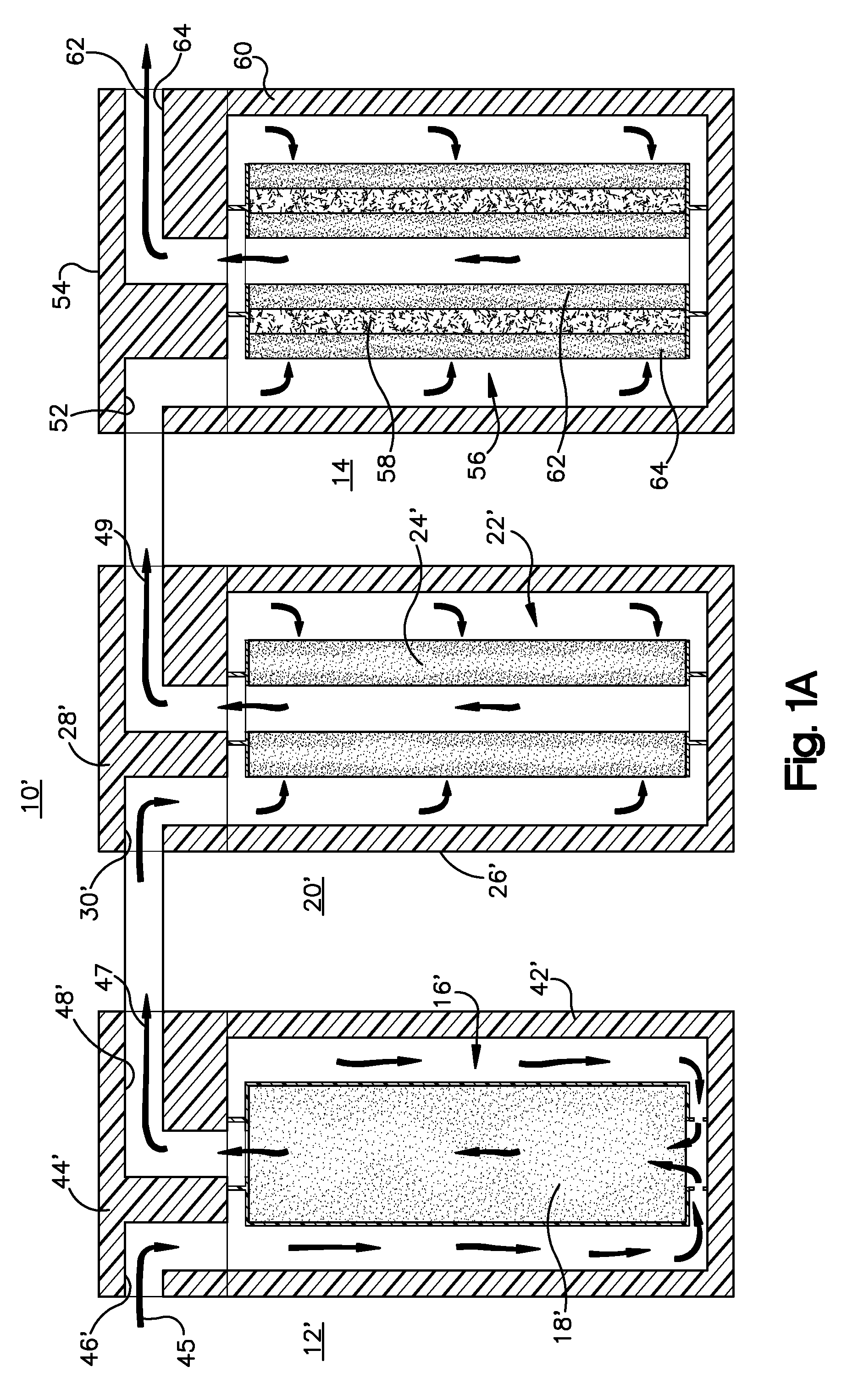Treating liquids with pH adjuster-based system
a technology of liquid ph adjuster and liquid ph, which is applied in the direction of multi-stage water/sewage treatment, separation process, and treatment involving filtration, etc. it can solve the problems of raising regulatory concerns, affecting the ph of liquid ph, and affecting the normal use of adsorbent media in arsenic removal services.
- Summary
- Abstract
- Description
- Claims
- Application Information
AI Technical Summary
Benefits of technology
Problems solved by technology
Method used
Image
Examples
example
[0048]As shown in FIG. 3, using the acidifier upstream of the water treatment cartridge resulted in breakthrough of arsenic through the media after treatment of about 2400 gallons of water, which is much later compared to the Comparative Example. Using the acidifier according to the invention increased the capacity of the media to adsorb more arsenic. The life of the water treatment cartridge was increased by about a factor of 4 (from about 600 to about 2400 gallons).
[0049]FIG. 4 shows that the influent had an inlet pH of 8.5 before any treatment. The outlet pH of the effluent or product water out of the system that is described above, was decreased initially to about pH 6.5, within the range permitted by government regulations for drinking water, and then gradually increased as a greater volume of water was treated. As the chemical effects of the acidifier were exhausted, the pH gradually increased. FIG. 4 shows that as more water was treated and the acidifier material was used up,...
PUM
| Property | Measurement | Unit |
|---|---|---|
| particle size | aaaaa | aaaaa |
| diameter | aaaaa | aaaaa |
| diameter | aaaaa | aaaaa |
Abstract
Description
Claims
Application Information
 Login to View More
Login to View More - R&D
- Intellectual Property
- Life Sciences
- Materials
- Tech Scout
- Unparalleled Data Quality
- Higher Quality Content
- 60% Fewer Hallucinations
Browse by: Latest US Patents, China's latest patents, Technical Efficacy Thesaurus, Application Domain, Technology Topic, Popular Technical Reports.
© 2025 PatSnap. All rights reserved.Legal|Privacy policy|Modern Slavery Act Transparency Statement|Sitemap|About US| Contact US: help@patsnap.com



